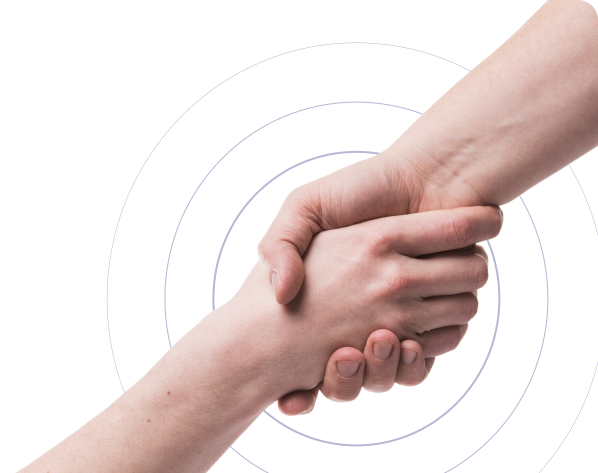
ADHD Awareness Month is an annual event in October in which people with attention deficit hyperactivity disorder are recognized, and their needs are brought to attention. Being a sufferer yourself or supporting someone who is, this is a challenge to learn, share, and make a difference during this month.
In this article, we’ll dive into why ADHD Awareness Month exists, how it helps shape social understanding, and ways you can get involved, especially if you’re in or near Spokane Valley.
We’ll also explore symbols like the ADHD awareness ribbon, how spatial awareness is related to ADHD, and how local support connects with broader efforts.
Skip To
Table of Contents
What Is ADHD Awareness Month?
ADHD Awareness Month was an effort that started at the grassroots level as medical organizations and individuals joined advocacy groups. The idea is to create a spotlight on the reality of ADHD as it unfolds every day, highlighting successes and challenges and emphasizing the need for more people to have easy access to care and awareness.
Each year, individuals, schools, clinicians, and advocates unite through events, webinars, and social media campaigns. The aim is precise: end stigma, improve diagnosis and treatment, and affirm that ADHD is a lifelong neurodevelopmental disorder requiring compassion and support.
Why ADHD Awareness Matters
Even today, many people misunderstand ADHD, associating it only with hyperactive children or poor behavior. In reality, ADHD spans a wide range of presentations:
1. Adults who struggle with focus
2. Children who feel overwhelmed by daily tasks
3. Individuals who manage heavy emotions and executive dysfunction
Raising ADHD awareness helps people:
1. Learn that ADHD is a neurodevelopmental condition
2. Understand that spatial awareness and executive functions may be affected
3. Recognize that ADHD often overlaps with anxiety, learning differences, and other mental health conditions
By celebrating this month of awareness, we invest in more accurate perception, opening doors for diagnosis and treatment, empathy, and practical support. Supporting ADHD through education and advocacy fosters a better future for both children and adults.

End the Emotional Pain. Get Your Life Back.
Feeling Depressed, Anxious or Struggling with Mental Health Illness? Get Safe Comfortable Mental Health Dual Diagnosis High-Quality Therapy From Counselors That Care. Begin Your Recovery Now.
Hotline: (509) 348-4077

Symbols of ADHD Awareness
Like many health campaigns, the ADHD community has adopted symbols to foster unity and visibility.
ADHD Awareness Ribbon
The blue ribbon, often accompanied by green, yellow, or even an orange ribbon, is a powerful emblem. Just as ribbons signify solidarity for breast cancer or autism, the ADHD awareness ribbon builds collective identity and recognition.
ADHD Awareness Symbol
You may see visuals of puzzle pieces or brain outlines, often depicted in blue and yellow colors. These icons communicate cognition, differences, and the diversity of experiences within the ADHD community.
Wearing or displaying these symbols during ADHD Awareness Month shows allies and those affected that they’re seen. These symbols are an outward sign of shared experiences and advocacy.
ADHD and Spatial Awareness
Spatial awareness refers to understanding how you and objects occupy space in relation to each other. Some people with ADHD report challenges in this area, leading to:
- Bumping into things
- Difficulties organizing physical space
- Struggles with spatial tasks like parking or navigating new places
Highlighting ADHD’s impact on spatial awareness during ADHD Awareness Month raises awareness of lesser-known symptoms, validating the full range of challenges many individuals face every day.

How You Can Take Part This October
ADHD Awareness Month is more than a period—it’s a call to action. Here’s how you can make an impact:
1. Educate Yourself
- Read credible sources from the National Institute of Mental Health, CHADD, or credible ADHD researchers
- Learn about the ADHD awareness ribbon and symbol and what they mean
- Explore how ADHD affects daily life and emotional well-being
2. Share Your Story
- Post your experiences on social media using #ADHDAwarenessMonth
- Host or attend local events in Spokane Valley or online webinars
- Talk about what living with ADHD is like, whether you’re newly diagnosed or have lived with it for years
3. Wear and Share Symbols
- Attach a blue or green ADHD ribbon to your bag or lapel
- Decorate your workspace or online profiles with the ADHD awareness symbol
- Display an orange ribbon to promote broader ADHD Awareness
4. Advocate for Access
- Talk to your school, clinic, or workplace about ADHD-friendly environments
- Support local policies that improve ADHD assessment and care
- Encourage open dialogue about mental health conditions and ADHD symptoms
5. Support Local Efforts
- Donate or volunteer with ADHD support organizations
- Educate healthcare providers and families through community forums
- Join support groups for people with ADHD to learn from personal experiences
6. Build Emotional and Spatial Awareness Tools
- Encourage the use of planners, reminders, or mindfulness apps
- Highlight findings on ADHD spatial awareness to improve daily support
- Help children with ADHD develop systems to stay organized
Benefits of Increased ADHD Awareness
More awareness brings real benefits:
- Improved diagnosis and treatment for attention deficit hyperactivity disorder
- Greater acceptance of people with ADHD and their unique traits
- Reduced stigma and less internalized self-doubt
- Enhanced support in daily life, including local Spokane Valley programs
- A better understanding of how symptom of ADHD varies across individuals
Highlighting shared experiences encourages support and compassion in families, schools, and communities.
Get Help. Get Better. Get Your Life Back.
Searching for Accredited Dual Diagnosis Mental Health Centers Near You?
Even if therapy failed previously, or are in the middle of a difficult crisis, we stand ready to support you. Our trusted behavioral health specialists will not give up on you. When you feel ready or just want someone to speak to about counseling alternatives to change your life call us. Even if we cannot assist you, we will lead you to wherever you can get support. There is no obligation. Call our hotline today.
FREE 24/7 Dual Diagnosis Mental Health Services HotlineLocal Spotlight: Spokane Valley and We Level Up Washington
If you’re in Spokane Valley, here’s how to localize your support during ADHD Awareness Month:
- Visit community centers during October for educational events
- Attend workshops on topics like emotional regulation and ADHD spatial awareness
- Reach out to We Level Up Washington for family-focused care and individualized therapy
We Level Up Washington provides support groups, medication management, coaching, therapy, and examinations. They are focused on person-centered care, which emphasizes your needs and abilities. They have an expert who can help you with your concern, whether you are trying to cope with the new diagnosis or need additional assistance.
Comfortable Facilities & Amenities
High-Quality Mental Health Services & Behaviroal Health Substance Abuse Treatment
Rehab Centers TourRenowned Mental Health Centers. Serene Private Facilities. Inpatient Rehab Programs Vary.
Mental Health Helpline: (509) 348-4077Proven recovery success experience, backed by a Team w/ History of:
15+
Years of Unified Experience
100s
5-Star Reviews Across Our Centers
10K
Recovery Success Stories Across Our Network
- Low Patient to Therapist Ratio
- Comprehensive Dual-Diagnosis Treatment
- Complimentary Family & Alumni Programs
- Coaching, Recovery & Development Events
- Comfortable Onsite Medical Detox Center
Frequently Asked Questions (FAQs)
-
What is the significance of the ADHD awareness ribbon?
The blue ribbon, sometimes green, yellow, or orange, serves as a symbol of unity, visibility, and celebration for individuals living with ADHD. It represents both ongoing struggles and successes.
-
How does spatial awareness tie into ADHD?
Spatial awareness challenges, such as navigating unfamiliar spaces or poor organization, are often overlooked symptoms. Highlighting spatial struggles encourages strategies that improve everyday function.
-
Where can I find community events during ADHD Awareness Month?
Check with We Level Up Washington, local Spokane Valley libraries, health clinics, and mental health clinics for resources.
-
How can I support someone with ADHD this month?
Start conversations, offer to accompany them to local events, or wear a symbol of support, understanding, and validation; these matters now more than ever.
-
What are the most common symptoms of ADHD in daily life?
ADHD patients tend to have difficulties with concentration, prioritization, complex emotions, and orientation. These symptoms may overlap with school, work as well as relationships. ADHD kids can also be hyperactive or inattentive, and adults tend to lack organization or the ability to stay focused.
Final Thoughts
ADHD Awareness Month is no longer just a date on the calendar but a challenge to be sympathetic and aware and to make changes in real life. To embrace ADHD as an advanced neurodevelopmental condition that complicates attention, spatial awareness, emotional health, and living in general, we validate human experience.
This October, make your voice heard, share your experience, educate others, and show your compassion to the ADHD community. As a parent, educator, friend, or person living with ADHD, you are much needed.
At We Level Up Washington, we promise to be with you throughout your treatment and take care of you in all aspects. Learn more, be assessed, or meet other people this ADHD Awareness Month by making contact today.
Call today to speak with our team and learn more about our programs. We Level Up Washington: (509) 348-4077. Your next step starts here.





